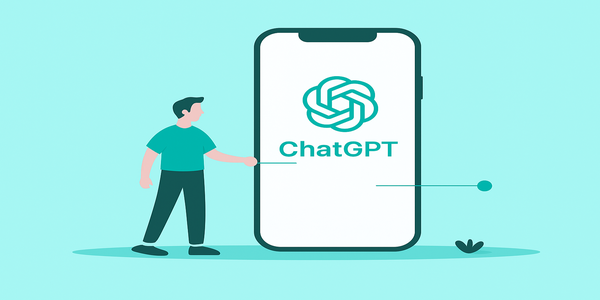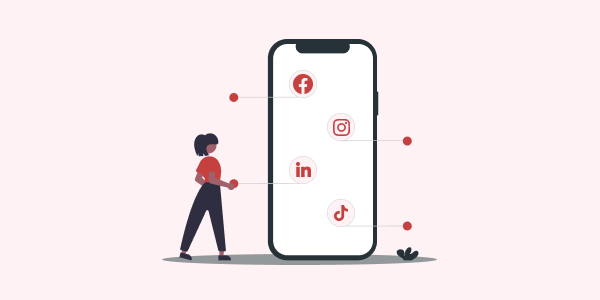Inbound marketing is really just another term for “marketing” in the current climate.
If you’re still focusing solely on traditional marketing mediums and approaches, you’re missing out on so many opportunities to connect with potential customers. By adopting an inbound approach to your marketing you’ll be connecting with people using the channels they use and in the ways they want to engage with you.
So why wouldn’t you be doing things the inbound way? Well, it can be slightly daunting when you’re not sure where to begin. Here’s an introduction to inbound marketing and how it works.

What exactly is inbound marketing?
Inbound marketing is an approach that:
- Aims to attract customers to your product or service.
- Involves people finding products and services on their own terms, rather than on a brand’s terms.
- Is heavily reliant on content as a means of engaging and nurturing prospects.
- Focuses on the customer: their needs, problems, challenges and interests.
- Is ongoing. The marketing activity doesn’t end once someone has purchased from you.
What’s the difference between inbound and outbound marketing?
Traditionally, marketing has been pretty much synonymous with advertising–think Mad Men and big ad agencies. Companies would compete to push their product or service in front of people using billboards, TV ads, radio ads, newspaper and magazine spreads, outbound sales calls, flyers and print ads. This is outbound marketing because the company is pushing their product or service out to their customers. It’s cut-throat, competitive and not a very personalised experience for the customer.
In contrast to the pushy tactics of outbound marketing, inbound marketing adopts more of a “pull” approach. Content is created with the aim of drawing the customer in so they feel they’ve found you on their own terms. It’s less salesy and more about providing value to people that keeps them interested, excited and more likely to keep coming back for more.

Content is created with the aim of drawing the customer in so they feel they’ve found you on their own terms.
Forms of outbound marketing are still used today. Bus backs, billboards, print ads and the like are still around. However, for small and medium-sized businesses, inbound offers an alternative that enables them to foster meaningful connections with their customers in a more cost-effective way.
What’s more, it’s not just a fad; inbound actually works. According to Marketo, those who choose to interact with your brand naturally convert 28 per cent higher than paid marketing.
The HubSpot model
Inbound marketing consists of three stages: attract, engage and delight.
HubSpot is one of the key players in the digital marketing industry and pioneered the inbound methodology. According to their model, inbound marketing consists of three stages: attract, engage and delight. Marketing efforts should be designed to create value at every one of these stages.
One of the key components of this methodology is the idea that marketing and sales should work together. The job of attracting customers isn’t solely a marketer’s responsibility, just as engaging them isn’t only the of the sales team or delighting them the job of your customer service team. Marketers need to work across these stages to provide value to people before they buy from you, during the process of deciding to buy and well after they’ve purchased.

Content, conversion and conversation: The central components of your inbound marketing strategy
Content: Content is one of the central elements of an inbound marketing strategy. You’ve probably heard of the term “content marketing”; this is a broad term that refers to the creation of engaging content designed to nurture prospective customers. Content like blogs, eBooks, whitepapers, opt-in email newsletters and infographics are designed to provide valuable and useful information to the reader that has their needs, challenges and interests at the centre.
Content is one of the central elements of an inbound marketing strategy.
Different types of content can be created for different purposes. Downloadable assets designed to educate people or help them address a key problem they’re facing in their daily lives can be a great way to present your business as an industry thought leader that really knows their stuff. Blog articles addressing relevant issues and topics your audience finds interesting can position you as a provider of helpful, topical content they can rely on. Engaging infographics educate and inform people about topics they may not know much about, generating value in the form of information.
Customers these days want to see brands as real people who care about them.
What’s more, it’s not just a fad; inbound actually works. According to Marketo, those who choose to interact with your brand naturally convert 28 per cent higher than paid marketing.
Conversion: By optimising your website’s content for search, you’ll also be helping people to find you organically when they search for something on Google. When they find your content on page one and click through to your website you’ll find yourself with a lot more leads–provided it’s properly designed for conversion of course.
Conversation: Customers these days want to see brands as real people who care about them, so your marketing needs to position you as being open to connecting, conversing and addressing customer needs. Conversations are going to become all the more pertinent with the rise of AI and chatbots. Inbound marketing is all about your customer finding and reaching out to you, but you need to make it easy for them to do so. It’s all about talking with them, not to them, as the outbound model tends to do.
How do you get started with inbound marketing?
With so many different channels to use, how do you know where to begin? The best thing to do to start with is to analyse your existing marketing efforts. To do this, it really helps to get an outside perspective. Sometimes it’s difficult to look at things objectively, so someone who doesn’t know your business can provide a more critical perspective and see what’s working and what isn’t.
than simply paying for a few ads and writing a few blog posts. You need a careful, strategic approach that sends the right message to the right person at the right time.
You need a careful, strategic approach that sends the right message to the right person at the right time.
Examine the capabilities you have within your existing team. There’s no use being overly ambitious and trying to get content marketing, email marketing and social media strategies all off the ground at once when you’re a three-person team already working full-time. This is where a digital marketing agency can really help. With a team of account managers, content creators, designers and developers, an agency can help you strategise and execute an inbound marketing strategy without the need for extra work on your part.
Get started with your inbound marketing strategy today. Reach out to our team.
Sources
https://mailchimp.com/resources/landing-pages-design-tips/
https://www.crazyegg.com/blog/landing-page-essentials/
https://www.shopify.co.nz/partners/blog/landing-page-optimization








